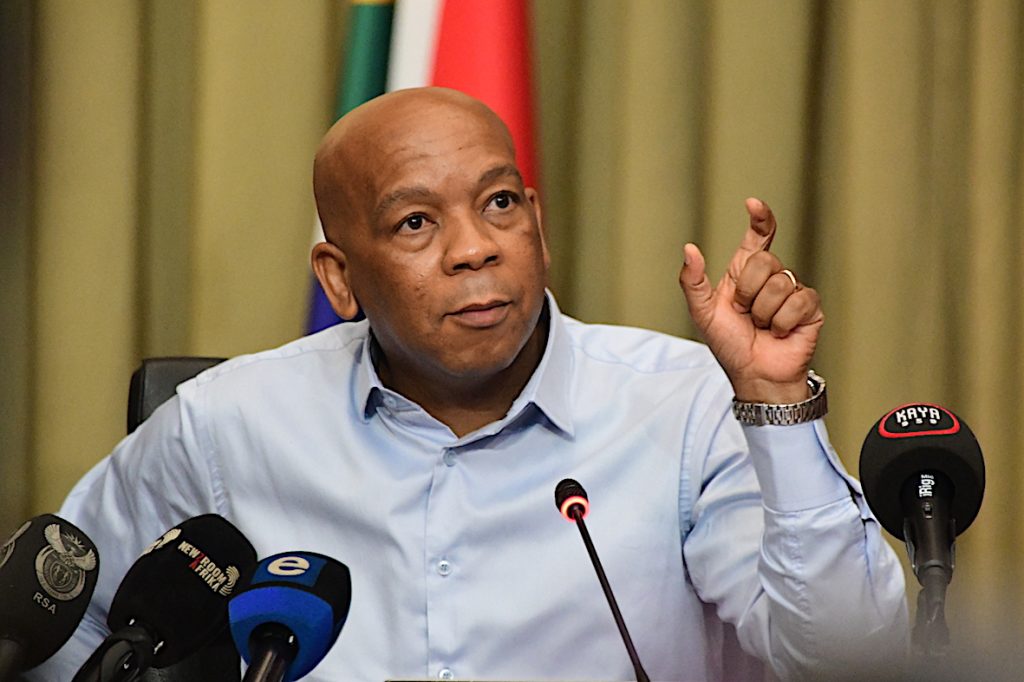To fix Eskom’s generation issue, the utility needs more money to invest in quality coal, improve poor procurement processes and up the morale of its staff who have lost hope in its ability to solve the load shedding problem.
Minister in the Presidency responsible for electricity, Kgosientsho Ramokgopa, highlighted the issues facing Eskom at a press briefing at the Union Buildings in Pretoria on Thursday, where he gave an update on the state of Eskom’s power stations.
Ramokgopa said Eskom’s energy availability factor (EAF) of all its commissioned units currently stands at 53%, dragged down by some of the worst-performing power stations, Kusile, Kendal, Majuba, Kriel, Duvha and Hendrina, whose EAF remains below average.
Investment
One of the key findings of Ramokgopa’s fact-finding mission at Eskom power stations between 20 and 31 March comes down to pouring more money into the utility.
According to the minister, there’s just not enough investment making its way to Eskom’s balance sheet to support the power utility’s operations, and the main evidence of this shortfall is the poor quality of coal funnelled to the state-owned enterprise.
Ramokgopa has attributed the poor quality of Eskom’s coal to a lack of investment in its cost-plus coal mines, mines that the utility has the responsibility to invest in.
“Because of the constraints at Eskom with regard to the balance sheet, we are unable to make new capital investment in these coal-plus mines and the net result is that the economy suffers because we are unable to further lift the EAF.”
“We are raising a different question that the conversation should not be about the constraint on the Eskom balance sheet and therefore its inability to make this capital investment. The conversation is about … the cost to the South African economy as a result of our failure to make that investment and then to rethink how we can [solve it] and the best way to make an investment and extract maximum value out of these units.”
However, as it stands, Eskom’s books are burdened with debt estimated at over R400 billion. Finance Minister Enoch Godongwana, in his 2023 annual budget speech announced debt relief for Eskom amounting to R254 billion, to be allocated over the next three years.
Read: Sars takes R60bn load shedding hit
Ramokgopa has not yet revealed the source of the extra funds for investment but said it is time to think beyond the utility’s balance sheet and possibly engage private sector players without necessarily relinquishing state ownership of the utility’s assets.
“So, the conversation is whether there is a possibility of providing additional fiscal support to make these investments so that we save the South African economy. Of course, when we provide that fiscal support it means debt to GDP, or your budget deficit, is likely to grow.”
Poor procurement
Another key pain point Ramokgopa found concerns Eskom’s poor procurement process which causes delays to the maintenance of units because suppliers take too long to source materials or supply incorrect materials.
This not only adds to the utility’s costs, but at times can also result in the intensification of power cuts due to the time it takes to bring units back online.
Read: Eskom’s interim profit drops almost two-thirds
One of the minister’s proposed solutions to this problem is for the utility to cut out the middleman and temporarily deal directly with manufacturers.
“Of course, when we give the opportunity to suppliers it’s about broadening the cake [and] making sure that opportunities are available to everyone but there’s a cost to the economy.
“The second option is to say that … in this short period, we are doing away with the need to go to individual suppliers. Just go directly to the original equipment manufacturer and in this way, we are able to fix [units] quickly and then once we’ve established stability and there’s additional and excess capacity then we go back to the suppliers.”
Skills drain
Further concerns are that valuable skills are leaving and preparing to exit Eskom in coming years as power stations are set to be decommissioned.
Most of Eskom’s tier-three power stations, the oldest in Eskom’s fleet, like Arnot, Hendrina and Camden, are up for decommissioning in the next few years. Tutuka, which is a tier-two power station, is scheduled to be taken offline in 2030.
This looming closure of power stations and the slow pace of onboarding new generation capacity is resulting in skilled engineers fleeing the utility, Ramokgopa said.
“One of the things I picked up when I went to the Eskom power station is the absolute lack of morale. I mean people are despondent – they don’t see a future there. When in fact, the country and Eskom have invested a lot in them, we are about to lose them as a result of what is lying ahead,” Ramokgopa said.
“There is no additional incentive for people to apply themselves. The best that we need to run these plants don’t see their future at Eskom.”
Ramokgopa is of the view that one of the solutions to the load shedding problem and the skills drain is to delay the decommissioning of these plants.
He acknowledges this will have varying implications for the environment in terms of emission risks. However, it will be a solution put before cabinet to provide critical support to the grid and preserve skills.
The minister is expected to present his findings and his office’s proposed solutions to Cabinet before the end of April, after which cabinet will decide on the best way forward.
Read:
Spain to invest $2bn in SA energy transition
SA scraps electricity state of disaster after lawsuits

